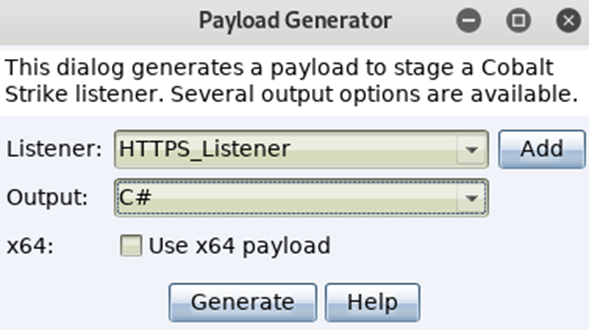

- Cobalt strike beacon set time how to#
- Cobalt strike beacon set time code#
- Cobalt strike beacon set time password#
This hook is demonstrated in the Applet Kit. Press + to add one or more hosts for the HTTP Beacon to call home to. There is no HTTP communication mode in this payload. In Cobalt Strike 4.0 and later, the DNS Beacon is a DNS-only payload.
Cobalt strike beacon set time how to#
The DNS response will also tell the Beacon how to download tasks from your team server. Choose Beacon HTTP as your payload option. The DNS response tells Beacon to go to sleep or to connect to you to download tasks. To stand up an HTTP or HTTPS Beacon listener, go to Cobalt Strike -> Listeners. APPLET_SHELLCODE_FORMATįormat shellcode before it's placed on the HTML page generated to serve the Signed or Smart Applet Attacks. You have incredible control over the behavior and indicators in this payload via Malleable C2. The &beacon_inline_execute function is Aggressor Script's entry point to run a BOF file.Hooks allow Aggressor Script to intercept and change Cobalt Strike behavior.
Cobalt strike beacon set time password#
A BOF is a good place to implement a lateral movement technique, an escalation of privilege tool, or a new reconaissance capability. logonpasswords beacon> maketoken domen user password - put on a token from the user beacon> pth domen user NTLM - put on a token from the user beacon> rev2self - return the original view of the session beacon> dcsync domain. You'll likely want to use Aggressor Script to run your finalized BOF implementations within Cobalt Strike. These decorations provide the compiler with the needed hints to pass arguments and generate the right call instruction. Keywords, such as WINAPI and DECLSPEC_IMPORT are important.

When you declare function prototypes for Dynamic Function Resolution, pay close attention to the decorators attached to the function declaration.
Cobalt strike beacon set time code#
The above code makes DFR calls to DsGetDcNameA and NetApiBufferFree from NETAPI32. Here's an example BOF that uses DFR and looks up the current domain: #include ĭECLSPEC_IMPORT DWORD WINAPI NETAPI32$DsGetDcNameA(LPVOID, LPVOID, LPVOID, LPVOID, ULONG, LPVOID) ĭECLSPEC_IMPORT DWORD WINAPI NETAPI32$NetApiBufferFree(LPVOID) ĭwRet = NETAPI32$DsGetDcNameA(NULL, NULL, NULL, NULL, 0, &pdcInfo) īeaconPrintf(CALLBACK_OUTPUT, "%s", pdcInfo->DomainName) When this process fails, Cobalt Strike will refuse to execute the BOF and tell you which function it couldn't resolve. This convention provides Beacon the information it needs to explicitly resolve the specific function and make it available to your BOF file before it runs.

Another option is to use Dynamic Function Resolution (DFR).ĭynamic Function Resolution is a convention to declare and call Win32 APIs as LIBRARY$Function. You have the option to use these to resolve Win32 APIs you wish to call. GetProcAddress, LoadLibraryA, GetModuleHandle, and FreeLibrary are available within BOF files. The DNS request for the initial host resolves to a Cloudflare-owned IP address that allows the attacker to employ domain fronting and send the traffic to the actual C2 host, also proxied by Cloudflare. This article will focus on Cobalt Strike's process injection in. This function can be executed through various sessions that you have obtained, such as Artifact Kit, Applet Kit and Resource Kit. The most common is to directly inject payload into a new process. BeaconOutput is an internal Beacon API to send output to the operator. Soon after that, the beacon initiates the Cobalt Strike beacon traffic to the C2 server. Cobalt Strike currently provides process injection functions in some scenarios. It's the function that's called by inline-execute and arguments are passed to it. The function go is similar to main in any other C program. Use inline-execute in Beacon to run the BOF.īeacon> inline-execute /path/to/hello.o these are argumentsīeacon.h contains definitions for several internal Beacon APIs. The above commands will produce a hello.o file. The same exploit, built as a BOF, is īeaconPrintf(CALLBACK_OUTPUT, "Hello World: %s", args) A UAC bypass privilege escalation Reflective DLL implementation may weigh in at 100KB+. They run inside of a Beacon process and are cleaned up after the capability is done.īOFs are also very small. These tools rely on an OPSEC expensive fork&run pattern that involves a process create and injection for each post-exploitation action. Listener Setup To create a DNS Beacon listener: go to Cobalt Strike -> Listeners, press Add, and select Beacon DNS as the Payload type. Use the checkin command to request that the DNS Beacon check in next time it calls home. Cobalt Strike already has tools to use PowerShell. Be aware that DNS Beacon does not check in until theres a task available. One of the key roles of an command&control platform is to provide ways to use external post-exploitation functionality. Way to rapidly extend the Beacon agent with new post-exploitation features. A Beacon Object File (BOF) is a compiled C program, written to a convention that allows it to execute within a Beacon process and use internal Beacon APIs.


 0 kommentar(er)
0 kommentar(er)
